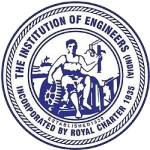A Review on Seismic Response of Concrete Arch Dam
Abstract
Abstract - Seismic safety of concrete arch dams are of significant concern as it may exhaust the social and economic wellbeing of humanity. Dam –Foundation and Dam- Reservoir interactions greatly influenced the dynamic behavior of arch dams. Under earthquake excitations, geological features of dam systems behave rigorously. Therefore, the evaluation of concrete arch dam involves the comprehensive inquisition of responses from the far–field and free-field boundaries. Models developed so far with simplified assumptions explicit the need for the identification of factors in the analysis and design of dam structures. Traditional analytical methods result in over-rigid dam structures that can upshot over-estimated stresses and strains. In the earlier researches, the foundation rocks were assumed massless. It easily simplifies the uncertainty in inertia and damping but gives inaccurate solutions. Thus, approximations in the dam-water-foundation system by ignoring the mainframe parameters play a crucial role in analyzing structure. Finite Element Method with relevant factors under consideration brings up the solution with most negligible errors. FE model calibrated with appropriate parameters will predict the exact behavior of dam structures under seismic excitations. This paper presents the review of research conducted on the concrete arch dam focusing on dam-foundation, dam–water interactions, massed and massless foundation, water compressibility, thermal variations, spatial variations in the ground motion, etc.
Downloads
References
Fok, K.-L., and Chopra, A. K. "Water compressibility in earthquake response of arch dams." J. Struct. Engg., ASCE 1987,113(5),958-975.
Nowak, S. and Hall, J. ‘‘Arch dam response to non-uniform seismic input’’, J. Eng. Mech., 1990,116(1), pp. 125–139.
Maeso, O., and Domı´nguez, J. ‘‘Earthquake analysis of arch dams. I: Dam-foundation interaction.’’ J. Eng. Mech., 1993, 119(3), 496–512.
Tan, H., and Chopra, A. K.,"Earthquake analysis of arch dams
Maeso, O., Juan J. and Domı´nguez, J. ‘‘Effects of Space Distribution of Excitation on Seismic Response of Arch Dams’’ J. Eng. Mech., Vol. 128, No. 7, July 1, 2002. ©ASCE, ISSN 0733-9399/2002/7-759–768.
A Ferdousi, “Earthquake analysis of arch dam including the effect pf foundation discontinuities and proper boundary conditions,” J. theoretical and applied mechanics ,52, 3, pp. 579-594, 2014.
Rihui Yang, C. S. Tsai and G.C. Lee, “Far-Field Modelling in 3D Dam-Reservior Interaction Analysis, J.Engg. Mechanics, Vol. 119, No.8, August,1993. 9 ISSN 0733-9399/93/0008.
Du Xiuli and Wang Jinting, “Seismic response analysis of arch dam -water-rock foundation systems”, Earthquake Engineering and Engineering Vibration, Vol.3, No.2
Baris Sevim, Alemdar Bayraktar and Ahmet Can Altunisik, “Finite element model calibration of berke arch dam using operational modal testing”, J. Viberation and Control, 17(7) 1065–1079, DOI: 10.1177/1077546310377912.
Anil K. Chopra and Jin-Ting Wang, “Earthquake response of arch dam to spatial varying ground motion’, Earthquake Engng Struct. Dyn. 2010; 39:887–906.
J. R Mays and L. H Roehm, “Effect of Vertical Contraction Joints in concrete arch dams”, computers & Structures Vol. 47, No. 4/5, pp. 615-627,1993 Dyn. 2010; 39:731–750.
M.T Ahmadi, M. Izadinia and H. Bachmann, “A discrete crack joint model for nonlinear dynamic analysis of concrete arch dam”, Computers and Structures 79 (2001) 403±420.
Copyright (c) 2021 Rinku John

This work is licensed under a Creative Commons Attribution 4.0 International License.
I/We agree with the provision of the Bye-Law 118 of The Institution of Engineers (India) which states that copyright of each paper published in Institution Journal or Annual Technical Volume in full or in Abstract at its centres shall lie with the Institution.

